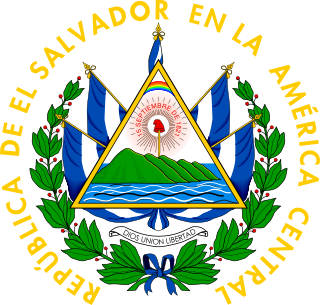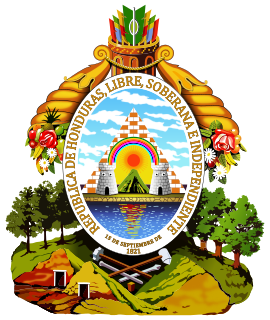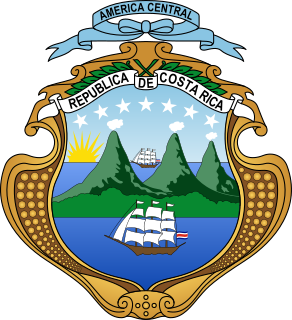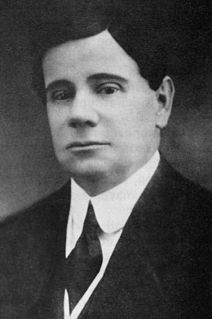
General elections were held in Mexico on Sunday, July 2, 2000.
Ley de Lemas is the Spanish name of the double simultaneous voting (DSV) electoral system which is, or has been, used in elections in Argentina, Uruguay, and Honduras. It employs an unusual open party-list proportional representation system, and works as follows:

General elections were held in El Salvador on 20 March 1994, with a second round of the presidential elections taking place on 24 April. Armando Calderón Sol of the Nationalist Republican Alliance won the presidential elections, whilst his party also won the legislative elections. Voter turnout was 50% in the first round of the presidential elections and 45.5% in the second, whilst it was 53.1% for the legislative election.

Presidential elections were held in Ukraine on 1 December 1991, the first direct presidential elections in the country's history. Leonid Kravchuk, the Chairman of the Verkhovna Rada and de facto acting president, ran as an independent candidate and was elected with 61.6% of the vote.

General elections were held in Mexico on July 6, 1988.

General elections were held in Brazil on 2 December 1945, the first since the establishment of Getúlio Vargas' Estado Novo. The presidential elections were won by Eurico Gaspar Dutra of the Social Democratic Party (PSD), whilst the PSD also won a majority of seats in both the Chamber of Deputies and the Senate. Voter turnout was 83.1% in the presidential election, 83.5% in the Chamber elections and 76.7% in the Senate elections.

General elections were held in Honduras in October 1916. Francisco Bertrand of the Nationalist Party was the only candidate in the presidential election, and was elected unopposed. As the incumbent, Bertrand had been constitutionally barred from contesting the elections, but had avoided the rule by resigning in favour of his vice president three months before the election.

Presidential elections were held in South Korea on 5 August 1952. The result was a victory for Syngman Rhee, who won 74.6% of the vote. Voter turnout was 88.1%. The election was held during the Korean War, which played an important role in consolidating Rhee's support.

General elections were held in Costa Rica on 7 December 1913, the first direct elections since 1844. They were also the first elections to have universal male suffrage, after economic and educational requirements were eliminated. Máximo Fernández Alvarado of the Republican Party won the presidential election, but both he and runner-up Carlos Durán Cartín later resigned and Alfredo González Flores was appointed president by Congress on 8 May 1914. The Republican Party also won the parliamentary election. Voter turnout was 78.0% in the presidential election and 78.6% in the parliamentary election.

General elections were held in Costa Rica on 7 December 1919. Julio Acosta García of the Constitutional Party won the presidential election, whilst the party also won the parliamentary election, in which they received 74.9% of the vote. Voter turnout was 57.8% in the presidential election and 42.1% in the parliamentary election.

General elections were held in Costa Rica on 12 February 1928. Cleto González Víquez of the National Union won the presidential election, whilst the party also won the parliamentary election, in which they received 53.3% of the vote. Voter turnout was 62.5% in the presidential election and 72.85% in the parliamentary election.

General elections were held in Costa Rica on 14 February 1932. Ricardo Jiménez Oreamuno of the Independent National Republican Party won the presidential election, whilst the party also won the parliamentary election, in which they received 46.7% of the vote. Voter turnout was 64.2%.

General elections were held in Costa Rica on 9 February 1936. León Cortés Castro of the Independent National Republican Party won the presidential election, whilst the party also won the parliamentary election, in which they received 59.4% of the vote. Voter turnout was 68.8% in the presidential election and 68.9% in the parliamentary election.

General elections were held in Costa Rica on 2 February 1958. Mario Echandi Jiménez of the National Union Party won the presidential election, whilst the National Liberation Party won the parliamentary election. Voter turnout was 64.7%.

General elections were held in Costa Rica on 1 February 1970. José Figueres Ferrer of the National Liberation Party won the presidential election, whilst his party also won the parliamentary election. Voter turnout was 83.3%.

General elections were held in Mexico on 4 July 1976. José López Portillo was the only candidate in the presidential election, and was elected unopposed. In the Chamber of Deputies election, the Institutional Revolutionary Party won 195 of the 237 seats, as well as winning all 64 seats in the Senate election. Voter turnout was 64.6% in the Senate election and 62.0% in the Chamber election.

General elections were held in Portugal on 28 April 1918, following a coup by Sidónio Pais in December 1917. The elections were boycotted by the Democratic Party, the Evolutionist Party and the Republican Union, who had won over 90% of the seats in the 1915 elections.

The 1917 Costa Rican coup d'état of 27 January 1917 was a rupture of the constitutional order in the Republic of Costa Rica, where the constitutional President Alfredo González Flores, was overthrown by his Minister of War and Navy Federico "Pelico" Tinoco and his brother and army commander José Joaquín Tinoco. The coup had the support of the Costa Rican oligarchy —mainly the bankers and coffee growers— affected by González's tax reform, particularly a greater tax burden for the big capital. Gonzalez did not enjoyed popular support as he had been appointed by Congress and not elected in open elections.

José Maria Soto Alfaro (1860-1931) was a surgeon and Costa Rican politician, brother of President Bernardo Soto Alfaro. Soto studied medicine at the University of Paris in 1885, practiced the first gastrostomy, thyroidectomy and cesarean section in Costa Rica. He practiced medicine at the Faculty of Medicine of Costa Rica and at the San Juan de Dios Hospital. sometimes deputy in the Constitutional Congress. Convinced tinoquista, he strongly supported the brief regime of two years imposed by the brothers Tinoco after the coup d'etat of 1917 and founded the "January 27 Club" in commemoration of the date of overthrow of Alfredo González Flores. After Federico Tinoco was overthrown and his brother José Joaquín was assassinated, Soto accepted to run as a presidential candidate against the opposition leader Don Julio Acosta García, although the nomination was merely symbolic since Acosta had the triumph assured it was important to avoid a single candidate election, something that it is recognized as a patriotic service.
The Peliquista Party was a Costa Rican political group, active between 1917 and 1919 during the Tinoco Brothers dictatorship following the 1917 Costa Rican coup d'état. The Peliquista Party emerged to participate in the elections of April 1917 to elect the President of the Republic and deputies for a Constituent Assembly. Its name derives from the nickname of "Pelico" with which the Provisional Head of the Republic was known, Federico Tinoco Granados, who was the party's presidential candidate and that election's sole candidate.

















